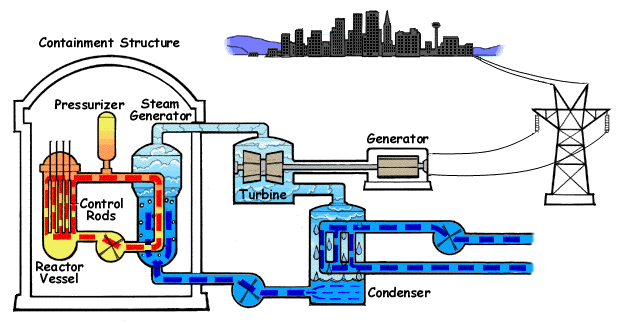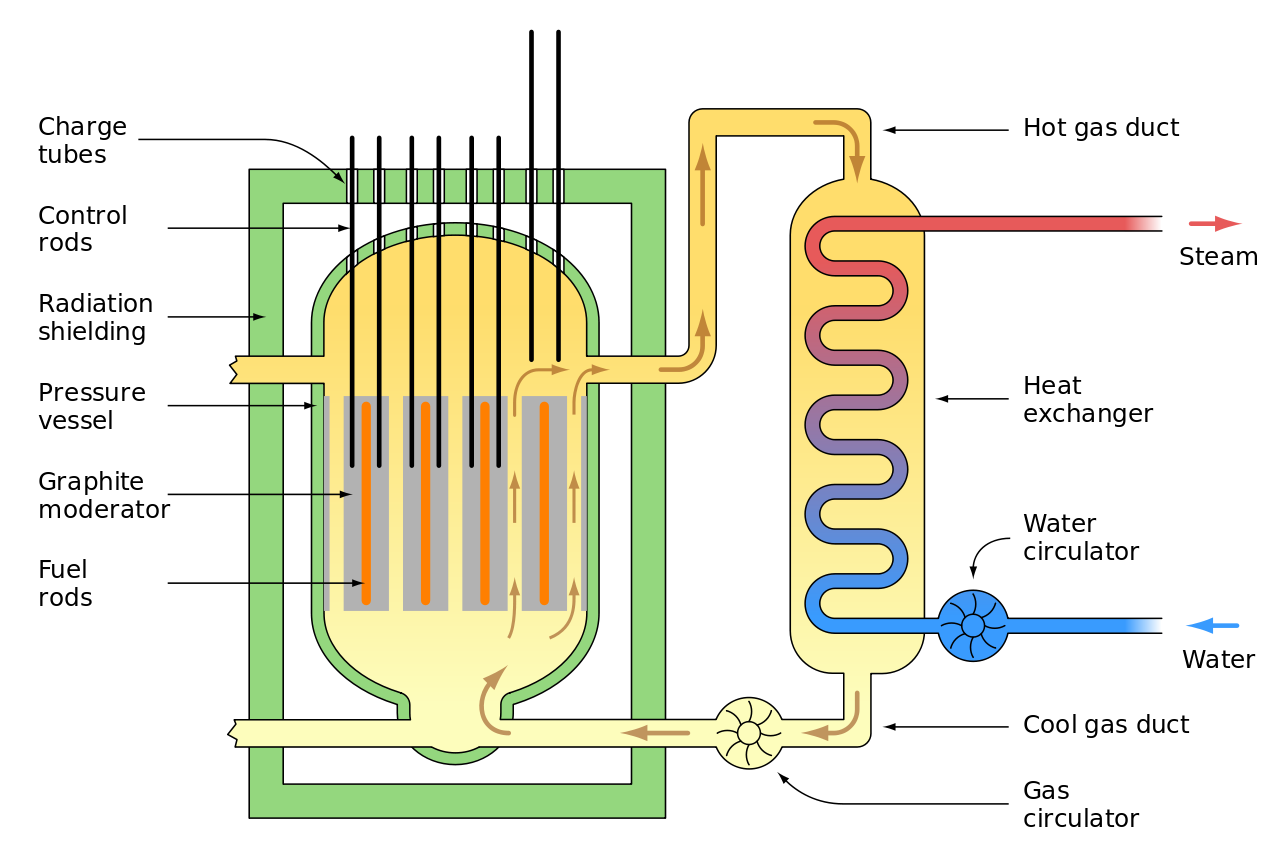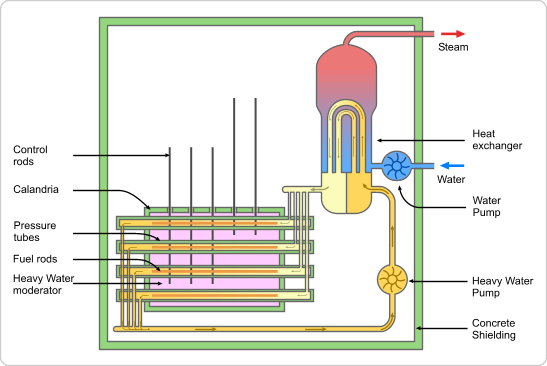Types of Reactors:
Pressurized Water Reactors (PWR):

Pressurized water reactors are a type of
light water reactor and the most common type of reactor in
the world, accounting for over 60% of operational reactors
as of 20143.
Inside a PWR, pressurized water is pumped through the
reactor vessel, cooling the reactor. The water is then
passed through tubes in a steam generator containing
low-pressure cool water. Heat is transferred from the
pressurized water to the cool water, creating steam to
power a turbine and generator.
Gas
Cooled Reactors (GCR):

Another common type of reactor is a gas
cooled reactor. Instead of using water as both a coolant
and moderator, like PWRs, gas cooled reactors use graphite
as a neutron moderator and carbon dioxide as a coolant. In
this design, carbon dioxide moves through the reactor
core, picking up excess heat from the fuel cells. This
carbon dioxide is then passed through a heat exchanger
which creates steam to power a generator in a similar
fashion to a PWR.
Heavy Water
Cooled and Moderated Reactors (CANDU):

The only type of heavy water moderated reactor that is used commerically is the CANDU nuclear reactor4. The CANDU reactor works in a very similar manner to a pressurized water reactor. However, the choice of heavy water as a moderator allows for less neutron absorption during a chain reaction. This is because the hydrogen atoms in heavy water are deuterium, meaning they have an additional neutron, thus the hydrogen is less likely to capture additional neutrons. This has the effect of making the CANDU reactor more efficient when it comes to fuel consumption.